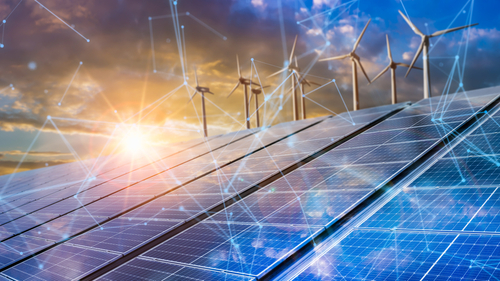IEA: Global energy crisis, power struggles bolster effort behind renewables growth

According to a new report from the International Energy Agency (IEA), the global energy crisis and energy security concerns created by global power struggles, namely Russia’s invasion of Ukraine, has triggered unprecedented growth in renewable power development.
The Renewables 2022 report found that, in the next five years, total renewable capacity growth worldwide is expected to nearly double, overtaking coal as the largest source of electricity generation as renewable power adds more than it did in the past 20 years. This means that renewable power capacity could grow by 2,400 GW by 2027 – the equivalent of China’s entire power capacity.
“Renewables were already expanding quickly, but the global energy crisis has kicked them into an extraordinary new phase of even faster growth as countries seek to capitalise on their energy security benefits,” IEA Executive Director Fatih Birol said. “The world is set to add as much renewable power in the next 5 years as it did in the previous 20 years. This is a clear example of how the current energy crisis can be a historic turning point towards a cleaner and more secure energy system. Renewables’ continued acceleration is critical to help keep the door open to limiting global warming to 1.5 °C.”
If successful, this growth would be 30 percent higher than the amount forecast last year, showing how quickly things can change when governments throw actual policy weight behind an idea. Renewable could account for more than 90 percent of global electricity growth over the next five years and are on track to overtake coal as an electricity source by early 2025.
Utility-scale solar PV and onshore wind remain the cheapest options for new electricity generation in a majority of countries globally, increasing their allure. Global solar PV capacity could nearly triple between 2022 and 2027, making it the largest source of power capacity on earth. Wind capacity growth is expected to nearly double over the same period, with the inclusion of major deployments of offshore projects. Installations of rooftop solar are also expected to pick up pace concurrently.
Nowhere will these changes be more prevalent and timely than in Europe, where governments and businesses are looking to rapidly divest themselves of Russian gas. European renewable power capacity is forecast to double that of the previous five-year period, with the potential to go even higher if European Union member states adopt new policies. China, the United States, and India are all instituting their policies and reforms more quickly than planned, with new investments in solar manufacturing and diversification of global PV supply chains overall. China remains the dominant force in solar, with 90 percent of global manufacturing capacity, but its share could decrease to 75 percent by 2027, by the IEA’s estimates.
Beyond wind and solar, biofuel demand is also up – and likely to expand 22 percent by 2027. Unlike solar, much of this expansion will be fueled by the United States, Canada, Brazil, Indonesia, and India.
The IEA report did note that the accelerated global development of renewable energy will require significant efforts to resolve supply chain issues, expand utility grids, and deploy more flexible resources.
